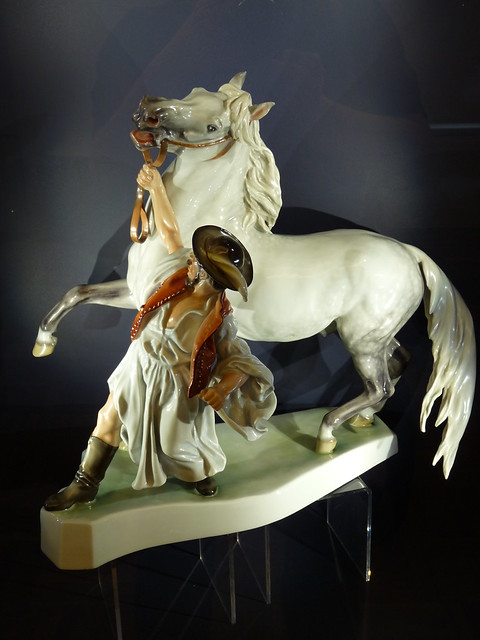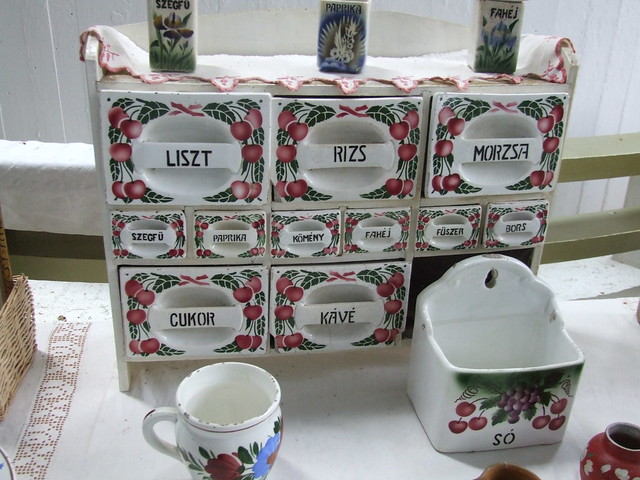The Hungarian porcelains are famous and known all over the world for their quality and beauty. While in Europe the first porcelains were born in the 18th century, in Hungary the production began only in the 19th century. The first manufactory was founded by Vince Stingl in Herend (Lake Balaton) in 1826.

Herend manufactory lived its age of prosperity when Mór Fischer became its director (for his activity he received also noble title from the emperor Frances Joseph). At that time, the manufactory won grand prix at the world exhibition in London in 1851 and in Paris in 1855 and became famous all over the world. The famous “Victoria” dinner set was produced in the mid-19th century for the Queen of Great Britain (the copy of it you can see in Sisi Palace in Gödöllő). The motifs, which decorate this set, are butterflies and blooming branches. The other known dinner sets are Rothschild (decorated with a golden stripe and with birds, especially larks) and Apponyi (also decorated with a golden stripe and with a complementary color). The styles of these porcelains are baroque and empire.

Until the 1930s the manufactory won numerous gold medals in various world exhibitions, but after WWII, it was nationalized. In 1964, Herend Porcelain Museum was opened, while in 1999 the Porcelaneum with a visitor center where the visitors can follow the porcelain production step by step. The most famous pieces can be visited in Sisi Palace in Gödöllő: beside to the already mentioned dinner set, in the last saloon there is a huge vase prepared for the European presidency of Hungary in 2011. The vase is decorated with the two first lines of the European national anthems.
Another famous Hungarian porcelain manufactory is that one of Hollóházi (Northern Hungary). This manufactory was founded in 1777 on the estate of the Károlyi counts, but in the 18th century, it made only various glass objects, and only later it began to produce porcelain. The most used colors are blue and gold, while the most used motif is flowers. The manufacture was bombed during WWII, later rebuilt and nationalized. In 1992, the manufactory was again privatized. Just like in Herend, also in Hollóháza there is the possibility to visit the museum where you can see how porcelain is made. In addition, the visitors can also try to paint the different pieces and then take them home as a souvenir.

Zsolnay manufactory became famous especially for the pyrogranite that you can see on the roof of different buildings in Budapest, for example on Matthias Church. I have already written a post of this manufacture’s history: https://fromhungarywithlove.wordpress.com/2017/12/01/an-exceptional-hungaricum-zsolnay/.
Beside pyrogranite and ceramics, Zsolnay has also been producing porcelain since 1926. The pieces are decorated with the “logo” of the manufacture, five green towers with the inscription “Zsolnay Pécs”. The style of these porcelains is art nouveau or secession, while the used motifs are mainly flowers, for example roses and pansies. In 2012, the Italian Patrizia Gucci redesigned these motifs and since then even gold flowers have appeared on these porcelains. These pieces are the most sought after in the international market.
Of course, these manufactories also produce different porcelain figures and not just dinner sets and all the three have been Hungaricum: Herend porcelain since 2013, Hollóházi since 2017, while Zsolnay since 2014.



